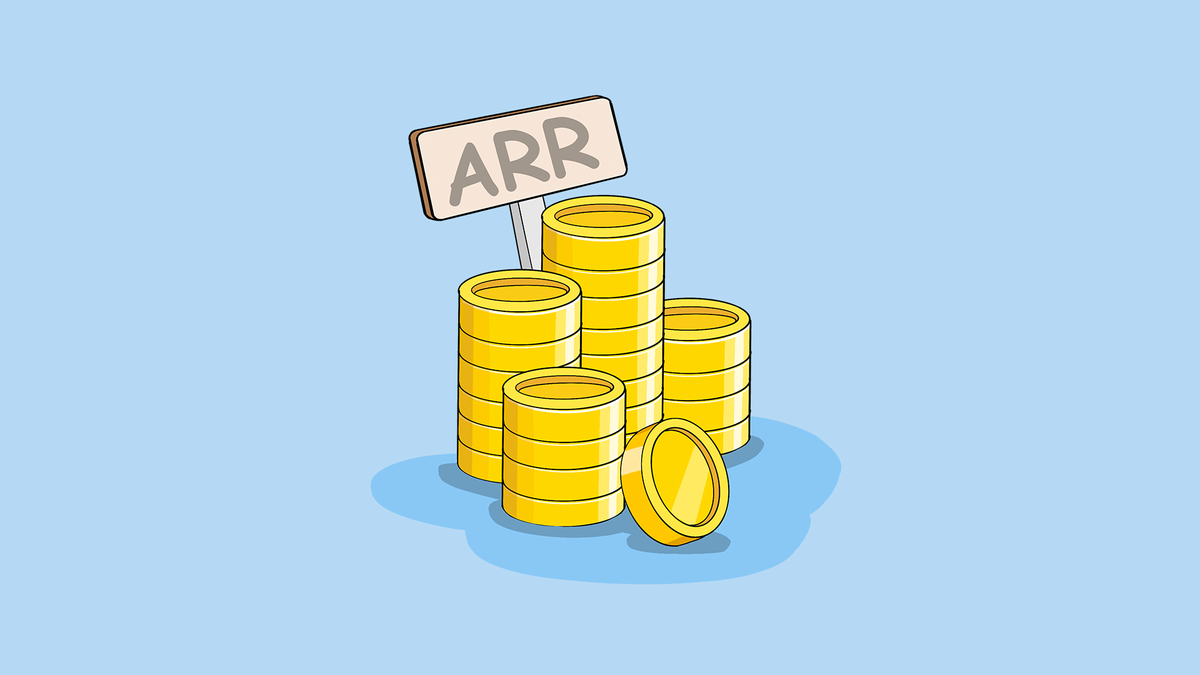“What’s your target ARR?” | “How much ARR does your customer base generate?” | “What’s your ARR – Revenue phasing like?”
If you are a founder of a SaaS startup or a business with a subscription model or plan to be, and these questions seem like Greek and Latin, you need to read on. Carefully. Investors may cut you some slack on cash flows and profitability, but growth is non-negotiable, and Annual Recurring Revenue (ARR) is one of the key metrics used for predicting growth.
Before we get to ARR, let’s understand revenue a little better.

Understanding Revenue
‘Revenue’ is easily understood—it’s the money amount of what you sold to customers. Simple. OK, not THAT simple. The revenue, or sales, that you report has a method in its calculation. Primarily, the two conditions that have to be satisfied for you to record revenue from a sales transaction—technically speaking—are:
- You've transferred to your customers all the risks and rewards of ownership (basically, you don’t hold any title or control over what you sold anymore)
- The amount of revenue can be reliably measured (i.e., there is no confusion over how much you can book).
Second, and more important, is the concept of ‘accrual’ in booking revenue. This is where things get a bit tricky, especially for contract or subscription revenue, like with SaaS products. Let’s look at a simple example of booking (or accounting for) a sale:
A sales contract with a large customer for your killer CRM software for $180,000 spans from Jan 2022 to Jun 2023.
Payment to be made monthly in advance, in equal installments of $10,000 between Jan 2022 and Jun 2023.
Under accrual, you cannot record the entire $180,000 as revenue. The revenue for 2022’s will be $120,000, while $60,000 will be recorded as revenue only in 2023. This is the time accrual and matching rule—booking revenue in the period it belongs, alongside the costs of that period. Beyond the time factor, there can be many differences and conditions for recording revenue due to variations like:
a. What if the buyer cannot terminate the contract?
If this is a watertight contract that cannot be terminated and the buyer HAS TO pay you all installments, you can book the entire amount of $120,000 as 2022’s revenue in January 2022. The pending installments amount will be recorded as a receivable from the customer. In double-entry accounting parlance, on 1 January 2022, the sale would be accounted as:
Bank A/c Debit $10,000
Customer Receivable A/c Debit $110,000 (2022 revenue is $120k)
Sales A/c Credit $120,000
b. What if the buyer can terminate the contract at any time?
In this case, you will accrue revenue only in the month in which it is due. If the buyer can terminate and receive a proportionate refund for the unused period, revenue booking will need to be done literally as if this were a daily contract. For example, you can book a total of only $20,000 as revenue as of 1 March 2022 even though you have received $30,000 by then. If the buyer terminates the contract on 15 March 2022, you will book $5,000 as revenue for March 2022, for a total of $25,000 on the contract ($10,000 each in Jan and Feb, plus $5,000 for half of March). The balance of $5,000 received for 16 March to 31 March will be refunded.
c. What if the contract can be terminated by the buyer at any time retrospectively?
In the rare case where a buyer can terminate a contract not just from a particular date but retrospectively (meaning, the contract never happened!), you can accrue or account for revenue only when the contract period is over. Any payments the buyer makes before that will be held in advance from the customer account and not booked as revenue. In double-entry accounting parlance, each receipt on the 1st of each month would be accounted as:
Bank A/c Debit $10,000
Advance from customer A/c Credit $10,000
So that was about revenue accrual.

Understanding ARR
ARR is an essential metric for any business that earns revenue from subscriptions. ARR is distinct from annual revenue ($120,000 explained above) and contract value ($180,000, the total amount of the contract over its lifetime).
In the above example, ARR is $120,000 through 2022, while revenue will be the amount that is accrued at that point. Hence, if we consider condition (b) above, which is the most common type of subscription contract:
Easy enough. Complexity arises from the fact that all subscriptions or contracts do not have the same pattern through the year, nor do they have the same terms for revenue recognition. This impacts your ARR calculation. Moreover, all sales may not be recurring. For example, let’s say you bag 2 other contracts in 2022:
- A one-time sale of a CRM add-on module to a customer for $15,000 in March 2022.
- A 12-month software licensing contract worth $180,000 signed in June with a deployment date in October; payment in monthly installments.
This is how your revenue and ARR would look like for 2022:
If either of the customers drops out in any month, that amount will be reduced from the ARR. Besides such licensing or subscription revenues, other revenue streams included in ARR include maintenance contracts, retainers, and any other recurring revenue type that can be reliably estimated in advance.
The ‘and’ is important because you might have a product or service that your customers subscribe to (say, if you are an electricity utility), which brings recurring revenue.
However, it cannot be calculated in advance since the amount depends on usage that varies. ARR for a gym, on the other hand, is predictable, and the calculation is perhaps the simplest to understand—it is monthly subscribers multiplied by 12. In each subsequent month, you take out the churn (customers who dropped out), add new enrollment, and multiply the monthly charge by 12 to get your ARR.

Uses of ARR
Compared to book revenue, ARR measures how stable and significant your recurring revenue is and better predicts your future growth than book revenue. The utility, of course, isn’t in the number itself but its evolution and breakup:
- What is the trend of additions to ARR (new customers)?
- How much ARR comes from upselling to existing customers (upgrades)?
- How much ARR are you generating from existing customers (stickiness)?
- What is the ARR churn?
- How much has ARR reduced due to downgrades or other reasons?
The final word
Like we mentioned in the very beginning, if you run a SaaS or a subscription-based service, understanding and knowing your ARR is a non-negotiable. This metric helps you define what your profitability is going to look like for your service.
However, you need to be wary of certain pitfalls of working with ARR, the biggest one being mistaking ARR for cash. This can give you a false sense of confidence in the amount of money your business may have.
Keep in mind the breakup of your ARR—including upgrades, downgrades, and discounts. This will leave you with a useable ARR metric that gives you a long-term picture and prospect of your business. Good luck!


